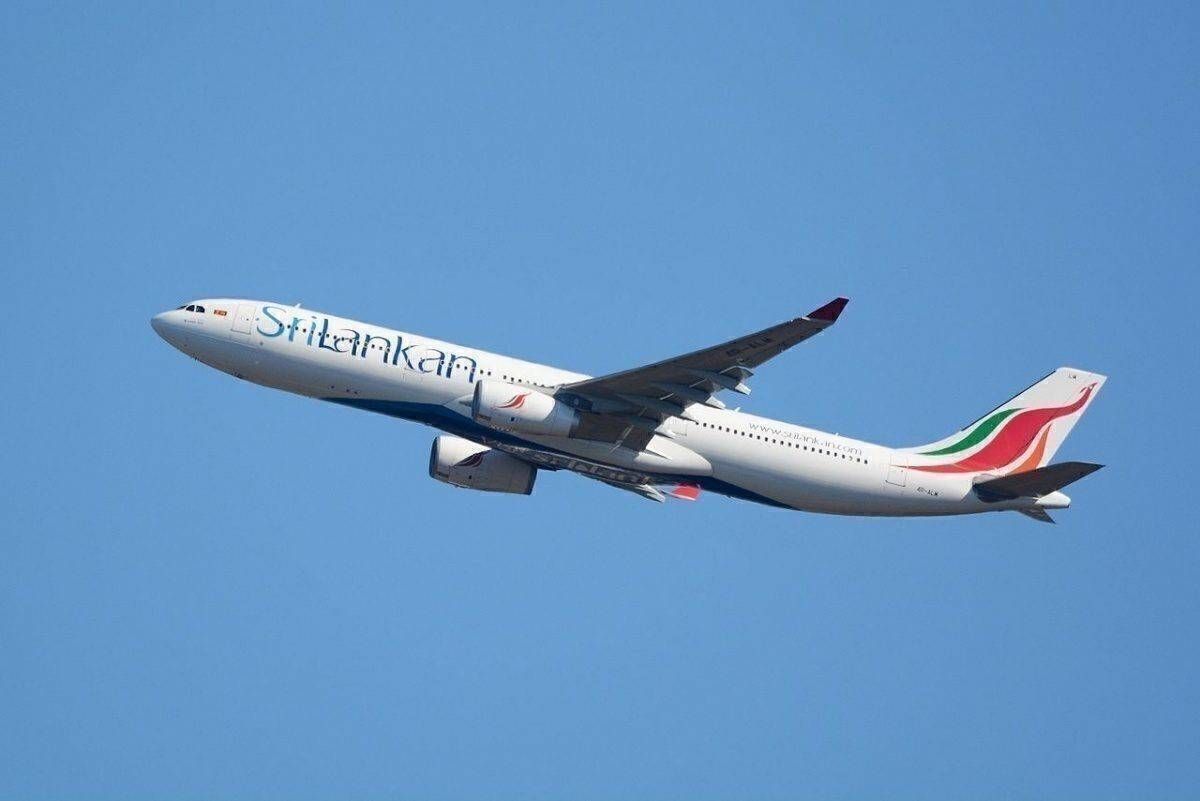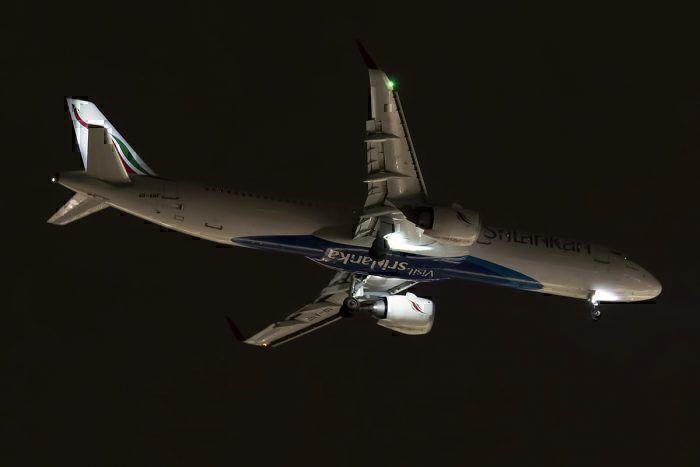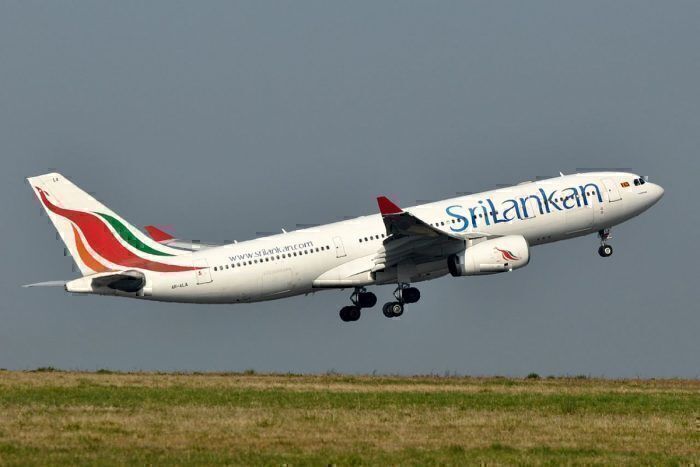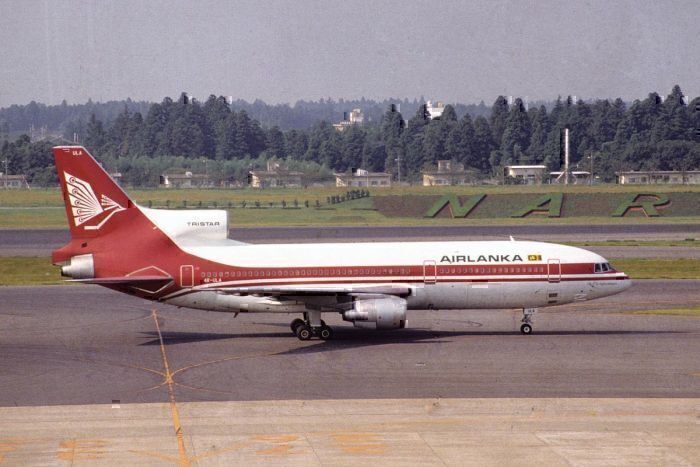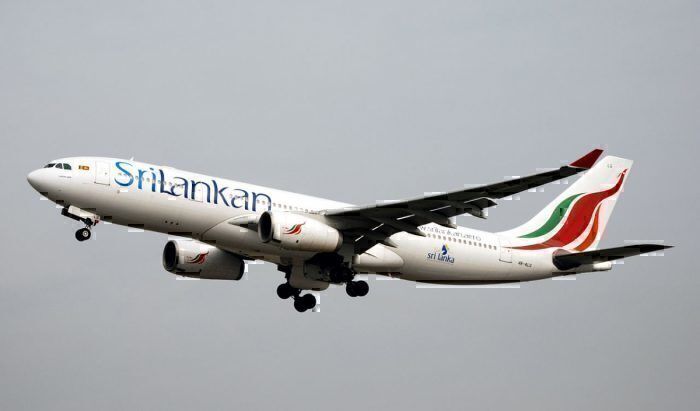SriLankan Airlines is currently 99.11% owned by the Government of Sri Lanka. However, they are looking to privatize 49% of the total ownership of the airline. The proposals are already in the pipeline but need approval from a Governmental Cabinet Committee. We take a look at why the government wants to sell, and how they can achieve this.
SriLanka's profit and loss
Let’s begin by reviewing some basic aspects of SriLankan’s finances: its profit and loss results. Sales are growing but not steadily, whereas elements of costs show consistent growth. Profits? Well, there aren't any.
For reference, total revenue for 2017/18 amounted to USD $912.5 million at current exchange rates. The airline has been in and out of debt since 2008, but revealed a five-year turnaround plan earlier this year. However, the Easter bombings impacted tourism numbers, and have led the airline to reduce its revenue forecast by $100m for this year.
Sri Lankan’s balance sheet: assets and liabilities
The balance sheet of the airline shows total assets of around $405 million as of 31st March 2018, but it also shows total liabilities of around $1,110 million. The difference between the two figures represents the airline’s equity or stockholders’ capital and you might already have noticed that it is negative; SriLankan’s losses have been piling up for years.
The proposal for SriLankan’s debt
Economy Next reports that what the Government of Sri Lanka is working to get something like $500 to $600 million re-financing from the Asia Infrastructure Investment Bank. This would immediately take the debt off the SriLankan balance sheet.
This refinanced loan would be placed in a Special Purpose Vehicle (SPV) which would be repaid in 20 years. The Government believes that SriLankan could leave $200 million debt on its balance sheet and prospective investors would not balk at that, although there are suggestions that they would like to get it down to $100 million.
The SriLankan fleet
At the time of writing, Flight Radar 24 reports that SriLankan has 27 aircraft that average just 8.22 years old. All of their aircraft are made by Airbus:
- A320: 7 planes
- A321: 6 planes
- A330: 14 planes
13 of their planes are under five years old and five of them are over 15 years old.
As a result of the changes taking place at the airline, they have revised their order book with Airbus. They did, in fact, suffer financial penalties, following changes to leases over the period 2015 – 2017, amounting to around $95 million.
Public-Private Partnership
CH-Aviation reports that the Sri Lankan government plans to sell a 49% stake in the airline. The vehicle of the current proposals is that a Public-Private Partnership will be set up.
In a PPP, the private partner is typically tasked with the design, construction, financing, operation and management of a capital asset to deliver a service to the government or directly to private end-users. The private partner either receives regular payments from the government or it levies charges directly on the end users, or sometimes even both as a reward for efforts in undertaking the investment and risks associated with it.
Public-Private Partnership Agency
In Sri Lanka, Public-Private Partnerships are managed by the Public-Private Partnership Agency. The PPPA plan for Sri Lankan has already been prepared, but it is subject to discussion and approval within Government circles at the time of writing. Once Cabinet approval has been given to the plan, it will be made available to prospective investors who are then free to accept its terms and invest, or simply walk away.
Previous part privatization
There is some hope that this plan will work, since they have done it before! In 1998, Emirates was sold a 40% stake in Air Lanka, as it was then, and given the job of working with the management of the airline to make and keep it as efficient as possible.
However, this agreement ended abruptly and in acrimony, although at the time Air Lanka was profitable. Critics of the current management of the airline pointed out that, in 2007, Emirates helped them to a profit of Rs5.145 million but that in 2016/17, the airline had returned a loss of Rs 28,930 million. This is approximately $163 million at current exchange rates.
Change of Board of Directors
In April 2018, SriLankan announced that they had a reconstituted Board of Directors for the company. Following years of losses and a loss of confidence in the current Board, it was felt new Board members would help to accelerate a restructuring process and help with the PPP.
The restructuring plan the airline is referring to has been prepared by Nyras, a consultancy company from the UK. The plan has already been presented to the Ministerial Committee and will be submitted to the Cabinet of Ministers for approval. Nyras has similar experience of such a turnaround assignment, having successfully worked with Swiss Air and Aer Lingus.
Strategic plan
SriLankan Airlines itself has formulated a “new five-year Strategic Business Plan for the period 2019-24 with the objective of transforming itself into a financially viable organization … while turning Sri Lanka into a strategic hub for air travel and air cargo in the Asia-Africa-Middle East region.”
The Strategic Business Plan is separate from the PPP proposal, and it can only be approved by the company’s shareholder, the Government of Sri Lanka.
A key aspect of the Strategic Business Plan includes developing a route network. This will include new destinations in Europe, Africa, the Middle East, South Asia, the Far East and Australia, as opposed to the current, limited point-to-point strategy.
The plan also focuses on concentrating on a fleet that is cost-effective and enhancing the customer experience by improving customer-centricity throughout the airline.
Presidential Commission
The Sunday Times of Sri Lanka wrote in July 2019 that some of the problems of the airline relate to corruption and a lack of transparency. They say that a Presidential Commission was convened to explore such matters. The report is, apparently, more than 800 pages long and it includes such topics as,
- Abuse of Power, influence and interference
- The Duties and Liabilities of the Directors
- The Business Plan of the Airlin
- Engineering
- Malpractices in Selection and Promotions
- and a lot more
The report closes with a series of suggestions for managing the airline and its services with a view to returning the airline to profit. They include treating employees and customers with respect and rooting out corruption and malpractice at every turn.
SriLankan aircraft carrying 50 percent extra crew
As if to emphasize the kinds of problems faced by SriLankan, Economy Next reported SriLankan flights to often carry 50 percent more crew than they need. This has apparently come about as a result of collective bargaining deals with unions.
An official was reported as having said that an Airbus A330 only required eight staff under regulations, but under the collective agreement, it carried 12. They conclude by saying that if the crew requirement could be brought down to 11, SriLankan can avoid hiring 100 extra staff.
What made matters worse there, they say, is that if attempts were made to reduce crew, complaints were made to the Department of Labour.
It remains to be seen whether SriLanka's sale will turn the fortunes of the airline around.

